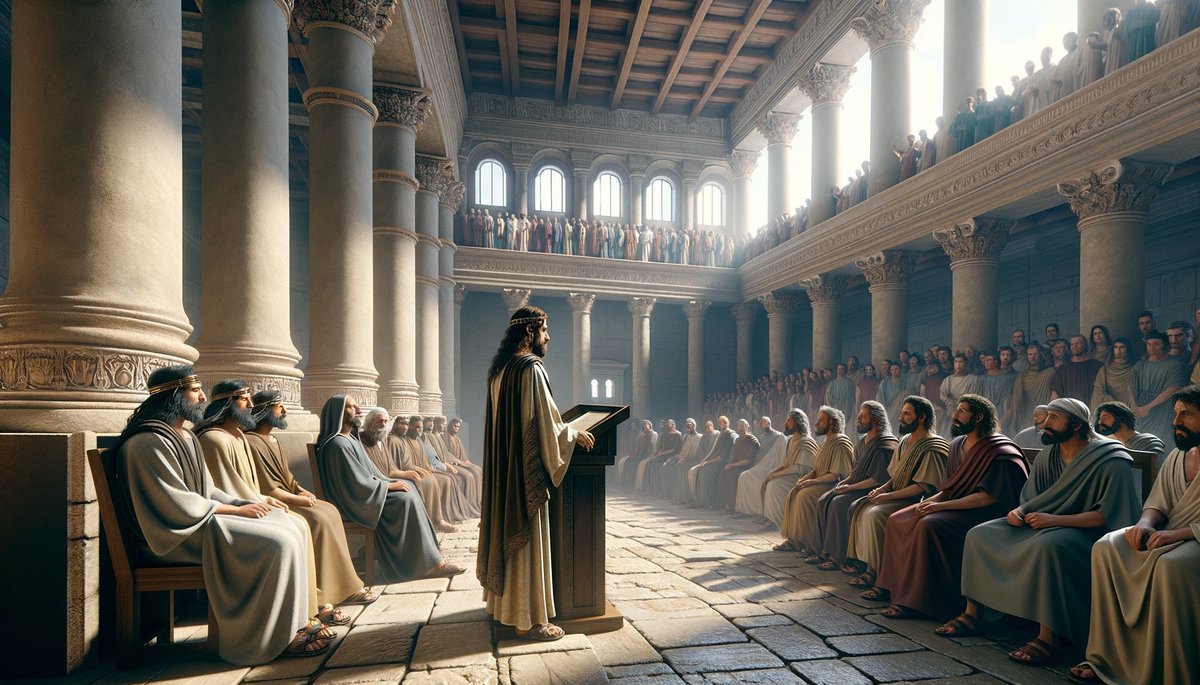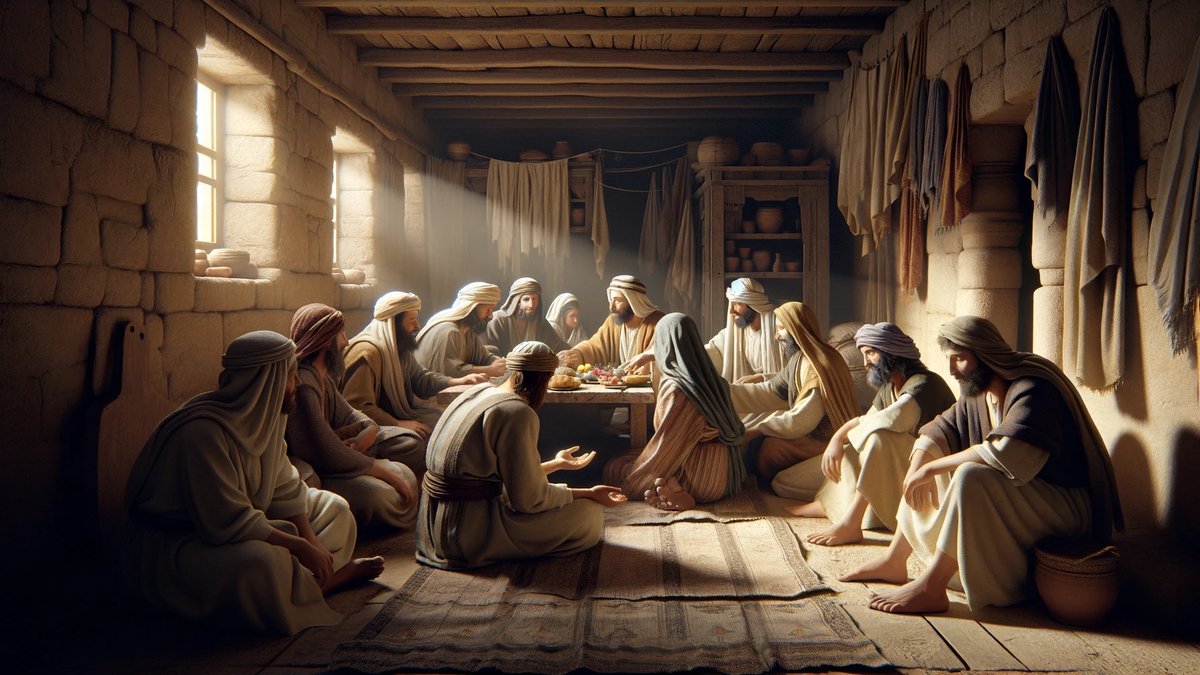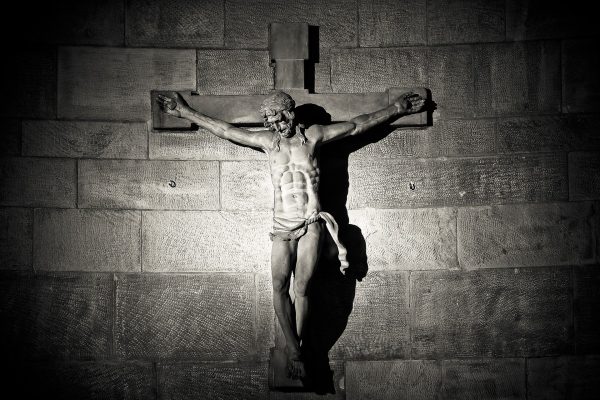Home>Christian Videos>Bible Stories>Who Died With Jesus Christ On The Cross


Bible Stories
Who Died With Jesus Christ On The Cross
Published: March 2, 2024
Jason DeRose, Managing Editor at Christian.net, uses his expertise in religion and journalism to deepen understanding of faith's societal impacts. His editorial leadership, coupled with a strong academic background, enriches the platform’s diverse content, earning him recognition in both journalism and religious circles.
Discover the powerful story of who died with Jesus Christ on the cross in this compelling Bible story. Explore the significance of this event and its impact on Christian faith. #bible-stories
(Many of the links in this article redirect to a specific reviewed product. Your purchase of these products through affiliate links helps to generate commission for Christian.net, at no extra cost. Learn more)
Table of Contents
The significance of the individuals who died with Jesus
The individuals who died with Jesus on the cross hold immense significance in Christian theology and the narrative of the crucifixion. Their presence alongside Jesus during his crucifixion carries profound symbolism and meaning. Here are some key points to consider:
-
Fulfillment of Prophecy: The presence of the two individuals, traditionally identified as criminals, fulfills the prophecy in Isaiah 53:12, which states that the Messiah would be "numbered with the transgressors." This fulfillment underscores the divine orchestration of Jesus' crucifixion as part of the redemptive plan for humanity.
-
Demonstration of Grace: The presence of these individuals also serves as a powerful demonstration of God's grace and mercy. Despite their past actions, Jesus extends his love and forgiveness to them, offering the promise of paradise to one of the criminals who expressed faith in him. This highlights the inclusive nature of God's redemptive work, regardless of one's background or past deeds.
-
Humanity's Need for Salvation: The presence of the individuals who died with Jesus underscores the universal need for salvation. Their presence alongside Jesus on the cross represents the broader human condition of sin and the need for redemption. This emphasizes the transformative power of Christ's sacrifice and the offer of salvation to all who turn to him in faith.
-
Symbol of Redemption: The presence of the individuals who died with Jesus serves as a powerful symbol of redemption and the transformative impact of Christ's sacrifice. Their proximity to Jesus, the ultimate sacrifice for humanity's sins, signifies the possibility of redemption and restoration for all who turn to him, regardless of their past.
-
Testimony to Christ's Kingship: The presence of the individuals who died with Jesus also serves as a testimony to his kingship and authority. Despite the agony of crucifixion, Jesus demonstrates his sovereignty by offering hope and assurance to one of the criminals, affirming his authority to grant eternal life.
The significance of the individuals who died with Jesus on the cross extends beyond mere historical detail, carrying profound theological and symbolic implications that continue to resonate within Christian faith and teachings.
Read more: Who Helped Jesus Christ Carry The Cross
The identity of the individuals who died with Jesus
-
Criminals Crucified Alongside Jesus: The individuals who died with Jesus on the cross are traditionally identified as criminals who were also sentenced to crucifixion. The Gospels of Matthew and Mark refer to them as "robbers" (Matthew 27:38, Mark 15:27), while the Gospel of Luke describes them as "criminals" (Luke 23:32). Their presence alongside Jesus during the crucifixion reflects the Roman practice of executing criminals, emphasizing the brutal and public nature of their punishment.
-
Differing Responses to Jesus: The Gospel accounts also highlight the contrasting responses of the two individuals towards Jesus. One of the criminals derided Jesus, challenging him to save himself and them if he was indeed the Messiah. In contrast, the other criminal rebuked his companion, acknowledged his own guilt, and expressed faith in Jesus, pleading, "Jesus, remember me when you come into your kingdom" (Luke 23:39-43). This stark contrast in their responses underscores the divergent attitudes towards Jesus' identity and the significance of faith even in the face of imminent death.
-
Symbolic Representation: While the Gospels do not provide specific details about the identities or backgrounds of these individuals, their presence serves as a symbolic representation of humanity's diverse responses to Jesus. The differing attitudes of the two criminals reflect the broader spectrum of human responses to Christ's message and offer of salvation. Their inclusion in the crucifixion narrative underscores the universal relevance of Jesus' redemptive work, reaching out to individuals from all walks of life and moral backgrounds.
-
Theological Implications: The identity of the individuals who died with Jesus carries profound theological implications, emphasizing the inclusive nature of Christ's redemptive work. Their presence challenges conventional notions of worthiness and righteousness, highlighting the transformative power of grace and the offer of salvation to all who turn to Jesus in faith. The contrasting responses of the two criminals also underscore the fundamental choice presented to humanity: to either reject or embrace the redemptive message of Christ.
-
Historical Context: In the historical context of crucifixion, the inclusion of the individuals who died with Jesus aligns with the Roman practice of executing criminals in a public and humiliating manner. Their presence alongside Jesus not only reflects the harsh reality of Roman justice but also serves as a poignant backdrop for the unfolding drama of redemption and forgiveness, as exemplified by Jesus' response to the repentant criminal.
The identity of the individuals who died with Jesus on the cross, while shrouded in historical anonymity, carries profound symbolic and theological significance, offering a compelling portrayal of humanity's diverse responses to Christ's redemptive message.
The impact of their presence on the crucifixion narrative
The presence of the individuals who died with Jesus on the cross profoundly impacts the crucifixion narrative, enriching its theological and symbolic significance. Their inclusion in this pivotal event resonates across multiple dimensions, shaping the understanding of Christ's redemptive work and the broader human condition. Here's a closer look at the impact of their presence:
-
Dramatic Contrast: The contrasting responses of the two individuals to Jesus create a dramatic tension within the crucifixion narrative. One criminal's mockery and disbelief stand in stark contrast to the other's humility and plea for mercy. This stark dichotomy underscores the fundamental choice presented to humanity – the choice between rejection and acceptance of Christ's redemptive message.
-
Demonstration of Grace: The presence of the individuals who died with Jesus serves as a powerful demonstration of God's grace and mercy. Despite their status as condemned criminals, Jesus extends compassion and offers the promise of paradise to the repentant criminal. This act of grace challenges conventional notions of worthiness and righteousness, emphasizing the transformative power of Christ's redemptive work.
-
Universal Relevance: Their presence underscores the universal relevance of Jesus' redemptive work. By including individuals from diverse moral backgrounds, the crucifixion narrative speaks to the inclusive nature of Christ's sacrifice. This universal relevance emphasizes the offer of salvation to all, regardless of their past or social standing, reinforcing the message of hope and redemption for humanity.
-
Symbol of Redemption: The individuals who died with Jesus serve as a powerful symbol of redemption and the transformative impact of Christ's sacrifice. Their proximity to Jesus, the ultimate sacrifice for humanity's sins, signifies the possibility of redemption and restoration for all who turn to him in faith. Their presence amplifies the redemptive theme of the crucifixion, highlighting the profound implications of Christ's atoning work.
-
Theological Depth: Their presence adds theological depth to the crucifixion narrative, emphasizing the broader implications of Christ's sacrifice. The contrasting responses of the two individuals underscore the fundamental human condition of sin and the universal need for redemption. This theological depth enriches the narrative, offering profound insights into the transformative power of Christ's sacrifice and the inclusive nature of God's redemptive plan.
The impact of the individuals who died with Jesus on the crucifixion narrative extends far beyond historical detail, shaping the theological, symbolic, and universal dimensions of Christ's redemptive work. Their presence enriches the narrative, offering profound insights into the transformative power of grace and the inclusive nature of God's redemptive plan.
The theological implications of their deaths
The theological implications of the deaths of the individuals who were crucified alongside Jesus carry profound significance within Christian theology and the narrative of redemption. Their presence and ultimate fate on the cross offer compelling theological insights that resonate with the core tenets of Christian faith. Here are the theological implications of their deaths:
-
Universal Redemption: The deaths of the individuals alongside Jesus underscore the universal scope of redemption offered through Christ's sacrifice. Their presence represents the broader human condition of sin and the universal need for salvation. This theological implication emphasizes the inclusive nature of God's redemptive plan, extending the offer of salvation to all who turn to Jesus in faith, irrespective of their past or social standing.
-
Transformative Power of Grace: The deaths of these individuals serve as a powerful testament to the transformative power of God's grace. Despite their status as condemned criminals, Jesus extends compassion and offers the promise of paradise to the repentant criminal. This theological implication challenges conventional notions of worthiness and righteousness, highlighting the profound impact of Christ's redemptive work in offering hope and restoration to those who seek forgiveness.
-
Redemption Amidst Despair: The deaths of the individuals alongside Jesus also exemplify the possibility of redemption amidst despair and suffering. Their presence on the cross, in the midst of agony and condemnation, reflects the redemptive promise of Christ's sacrifice. This theological implication underscores the profound hope embedded within the crucifixion narrative, offering assurance of forgiveness and eternal life even in the face of dire circumstances.
-
Divine Sovereignty and Mercy: The deaths of these individuals underscore the divine sovereignty and mercy manifested through Jesus' redemptive work. By extending forgiveness and the promise of paradise to the repentant criminal, Jesus demonstrates his authority to grant salvation and his boundless mercy towards those who turn to him in faith. This theological implication emphasizes the compassionate and redemptive nature of God's character as revealed through Christ's sacrificial death.
-
Symbol of Human Response to Grace: The deaths of the individuals alongside Jesus symbolize the diverse human responses to the grace and redemptive message of Christ. Their contrasting attitudes towards Jesus reflect the broader spectrum of human responses to the offer of salvation. This theological implication highlights the fundamental choice presented to humanity – the choice between rejecting or embracing the redemptive work of Christ, underscoring the transformative impact of faith in Christ's atoning sacrifice.
The theological implications of the deaths of the individuals who were crucified alongside Jesus on the cross offer profound insights into the universal scope of redemption, the transformative power of grace, and the compassionate nature of God's redemptive plan. Their presence enriches the theological depth of the crucifixion narrative, emphasizing the inclusive offer of salvation and the transformative impact of Christ's sacrificial death.
The historical context of crucifixion alongside others
In the historical context of the Roman Empire, crucifixion was a brutal form of execution reserved for the most despised and condemned individuals, often including criminals, slaves, and political dissidents. The practice of crucifixion alongside others served as a public spectacle intended to deter crime and reinforce the authority of the Roman state. Crucifixion was not only a means of inflicting excruciating physical agony but also a method of public humiliation and degradation, designed to dehumanize and intimidate both the condemned individuals and the spectators.
The inclusion of individuals alongside Jesus in the act of crucifixion reflects the harsh reality of Roman justice and the public nature of this form of execution. By being crucified alongside common criminals, Jesus experienced the depths of human suffering and degradation, aligning himself with the marginalized and the condemned. This historical context underscores the profound humility and solidarity demonstrated by Jesus, who willingly endured the shame and agony of crucifixion in solidarity with those deemed as societal outcasts.
Furthermore, the historical context of crucifixion alongside others highlights the stark contrast between the worldly perception of power and the redemptive purpose of Christ's sacrifice. While the Roman authorities sought to assert their dominance through the public display of crucifixion, Jesus, in his sacrificial death, revealed a different kind of power – the power of selfless love, compassion, and redemptive grace. His willingness to be crucified alongside others, despite his innocence, stands as a poignant testament to the transformative impact of his sacrificial death on the oppressive structures of human sin and injustice.
The historical context of crucifixion alongside others also serves as a poignant backdrop for the unfolding drama of redemption and forgiveness. Amidst the brutal reality of Roman crucifixion, Jesus' presence alongside the condemned individuals embodies the promise of hope and salvation. His response to the repentant criminal, offering the assurance of paradise, transcends the historical brutality of crucifixion and reveals the redemptive purpose underlying his sacrificial death. This historical context underscores the profound theological and symbolic significance of Jesus' crucifixion alongside others, emphasizing the universal relevance of his redemptive work and the transformative power of grace amidst human suffering and injustice.
In summary, the historical context of crucifixion alongside others provides a compelling backdrop for understanding the profound humility, solidarity, and redemptive purpose of Jesus' sacrificial death. This context underscores the transformative impact of Christ's sacrifice amidst the harsh realities of Roman crucifixion, offering profound insights into the universal scope of redemption and the compassionate nature of God's redemptive plan.















